When the PFD Fits... Wear It!
We’ve said it before, and we’ll say it again: when you’re on the water, wear your life jacket—also known as a Personal Flotation Device (PFD). Year after year, dozens of people lose their lives while boating. And year after year, statistics show that many of these tragedies could have been prevented by wearing a well-fitted, properly adjusted life jacket.
Having a life jacket is not enough. Wearing a life jacket is not enough. Only a good-quality PFD that is worn properly can be counted on to keep you afloat in the event of an emergency. We’ve shown you how manufacturers make sure your PFD is safe, according to standards developed by the US Coast Guard. We’ve taught you the ABCs of PFDs, explaining the different types of life jackets and the features and benefits to look for when selecting PFDs for you and your children. Now we’ll show you how to find the right size PFD and how to adjust it to fit comfortably and securely.
Sizing
Your life jacket should fit snugly without being too tight. The term the Coast Guard uses is “comfortably snug.” If you can’t make your life jacket fit snugly, then it’s too big. If you can’t comfortably put it on and fasten it, it’s too small.
Here’s NRS Customer Experience Specialist Diamond demonstrating the “Goldilocks” test.
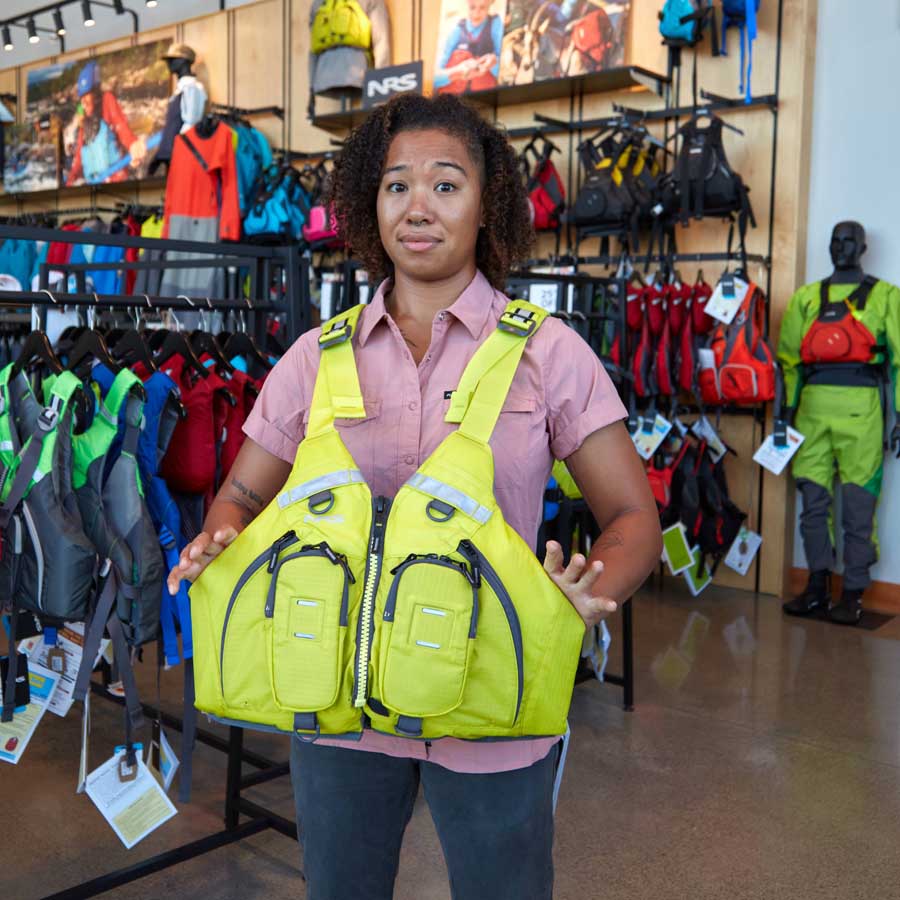
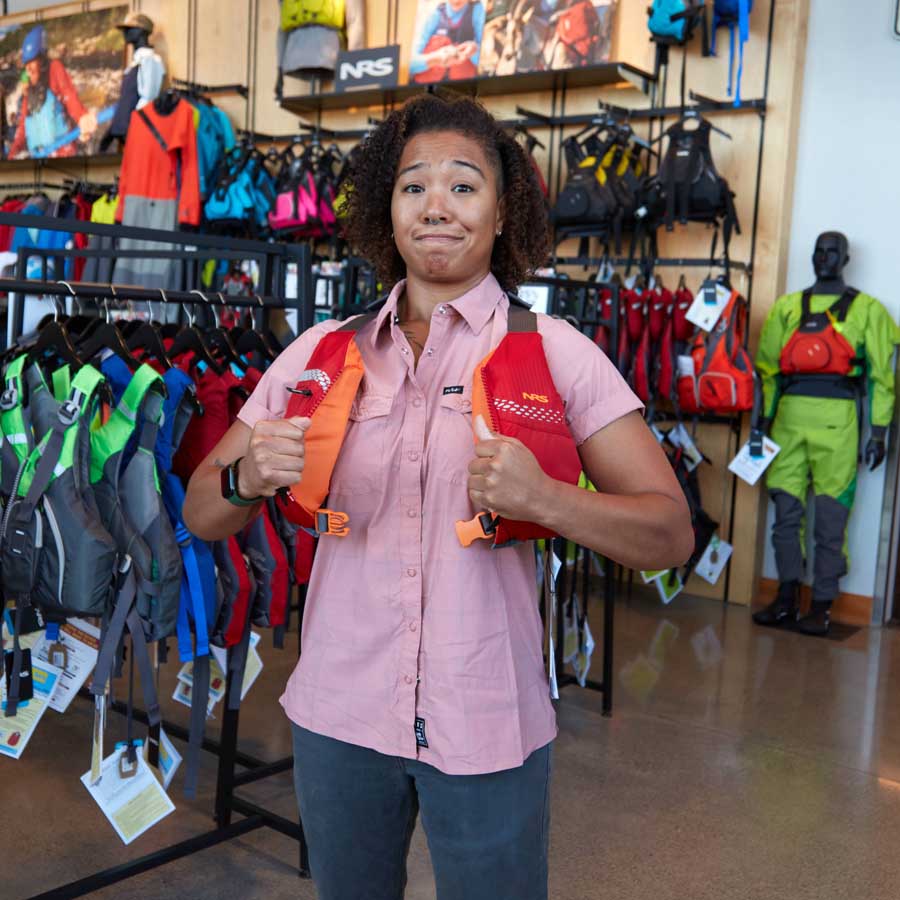

Okay, go finish your porridge, Diamond.
Every PFD manufacturer has its own sizing system, and it’s important to confirm sizing before purchasing any brand of life jacket. And of course, always try on a vest to be sure it fits before you hit the water.
NRS life jackets come in three size categories: Child, Youth and Adult. The first step toward finding the proper fit is to determine which category the person wearing the life jacket fits into. Finding your size is simple: measure your chest with a sewing tape and compare the measurement to the PFD manufacturer’s sizing recommendations. Weight can also be a determining factor depending on the manufacturer. Read the labels and choose accordingly.
When it comes to NRS life jackets* the main difference between a small and an XL is that the larger size has longer straps that allow the PFD to open wider to accommodate larger bodies. In other words, the XL will fit a smaller person (albeit with excess strap length and assuming it can be cinched tight enough to prevent the jacket from slipping off), but a small PFD won’t fit someone who needs the bigger size because there won’t be enough strap.
Some styles of PFDs may fit your body type and boating style better than others. The best way to know you’re getting the right PFD is to head to your local paddling shop and try them on in person.
*Note: this statement is true for all current NRS life jackets and PFDs manufactured through 2023.
Customizing the Fit
Just having the right PFD is not enough to keep you safe. You have to wear it, and you have to wear it the right way.
Different models of PFDs have different systems for entry and adjustment, but the goal is always the same—a snug secure fit. It’s best to start with all the adjustment points loose, and then tighten them sequentially to ensure a good fit.
With the PFD positioned midway around your torso, start by buckling the bottom buckle, if one exists, and fastening the entry, be it a zipper or buckles, on the side or in the front. That bottom adjustment is critical to preventing ride up; it helps “anchor” the jacket.
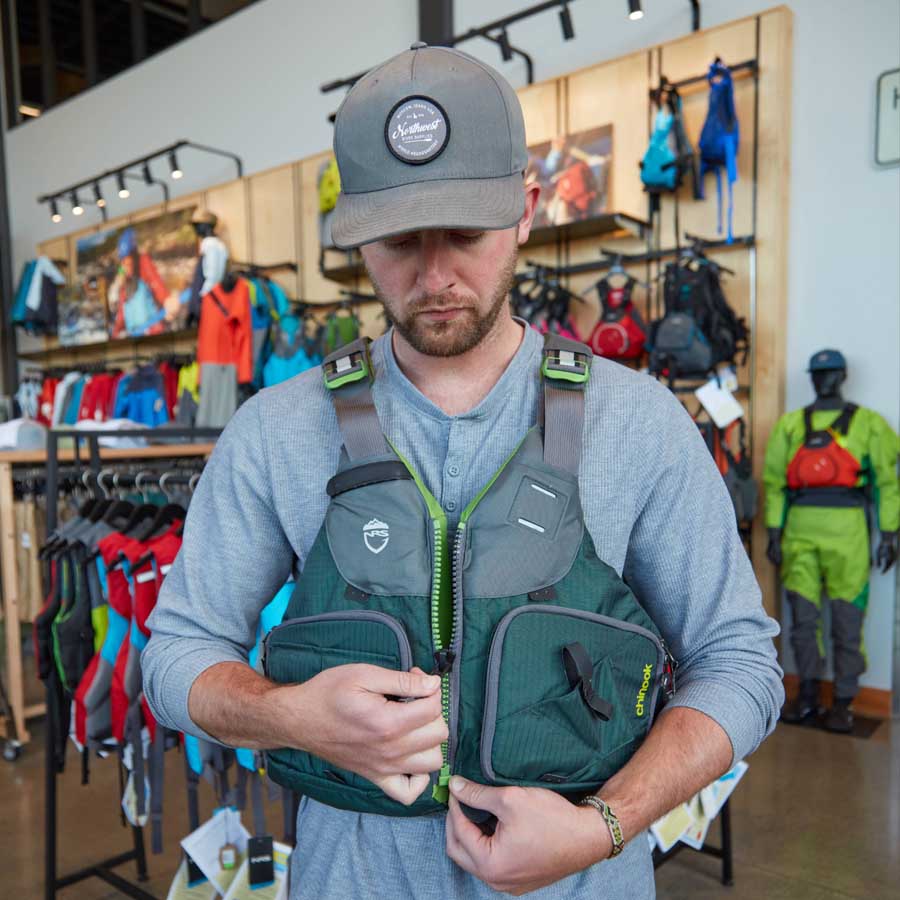
Working from the bottom to the top, tighten the adjustment straps by pulling forward on both sides at the same time. You can also hold the straps in each hand and shimmy the straps, which alternates tightening but in equal increments. The point is that if you tighten one side first, you run the risk of creating a lopsided fit. You want the jacket to remain centered on the body.
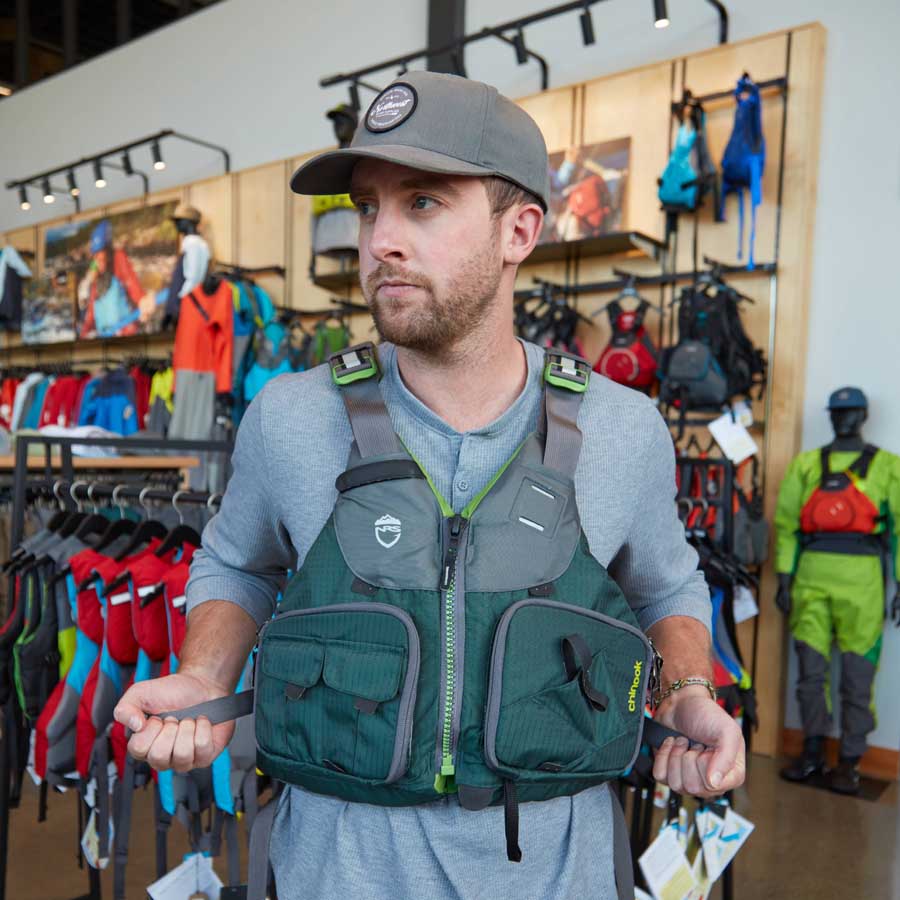
While it may seem odd, the final step is to tighten the shoulder straps. Again, it’s ideal to do this either at the same time or with equal increments.
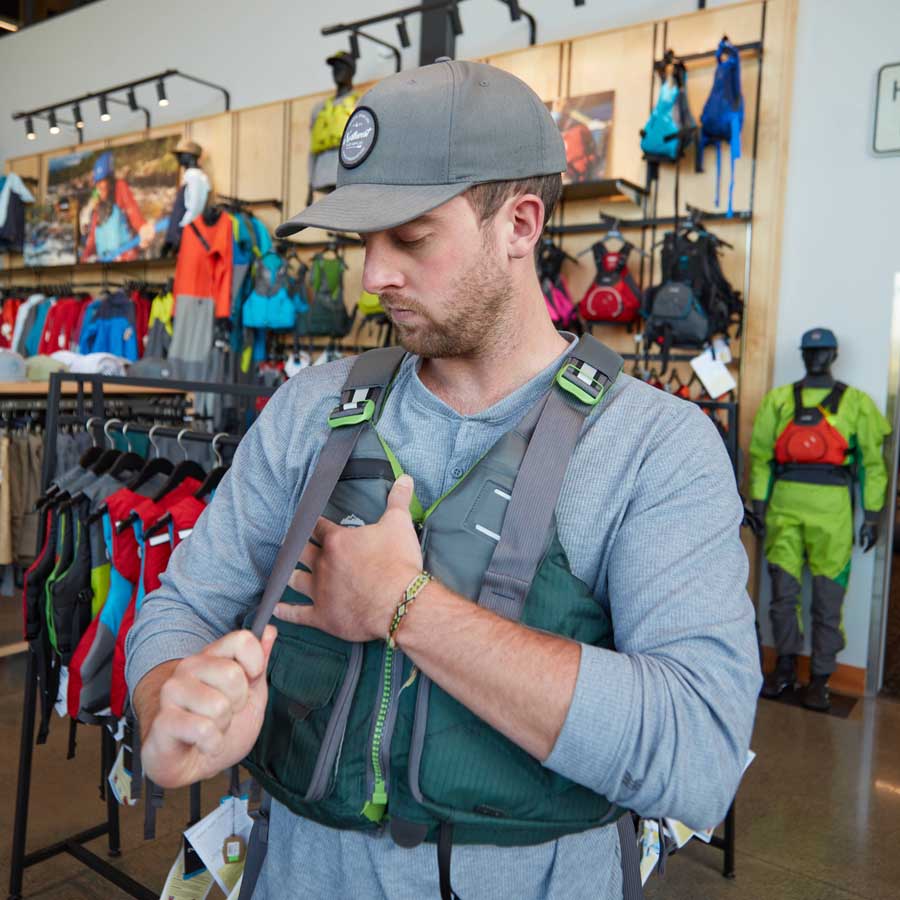
Once “comfortably snug” have a friend or staff member test the fit by pulling up on the shoulder straps. If the PFD stays in place, it’s properly fitted. If the PFD slides up around your ears, then it’s either too big or maybe not the best design for your body type.

Fitted and ready to paddle, be sure to tuck away any excess straps. If your PFD has strap garages, tuck the straps into the hole and out of the way.

Let’s recap. Wearing a PFD when you’re on the water is the single best thing you can do to ensure your safety. Selecting a model that’s comfortable for all-day wear helps ensure that you’ll want to keep it on… all day. Either contact us, or your local dealer, for recommendations on the jackets that are best for your type of boating.
When you can, try on different models to find one that’s comfortable for you. If you’re ordering directly from us, please give us a call (877.677.4327) and we’ll help walk you through the selection process. Use the chest sizing guide to pick the right size PFD. And remember, if you’ll be wearing it over cold water/weather apparel; take that extra bulk into account.
Finally, adjust your PFD for that comfortably snug fit. Loosen the straps, then tighten them snugly, starting at the bottom and working up.
Boat Often & Boat Safe
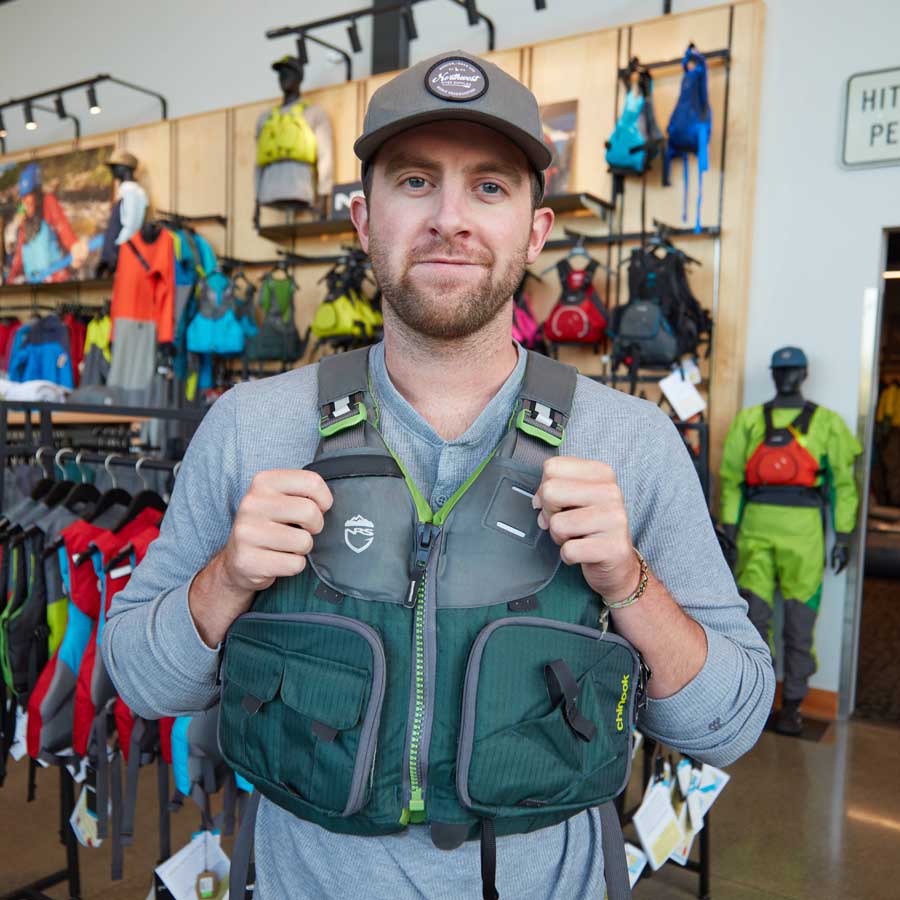
 NRS Gift Card: Always Fits, Always Wanted
NRS Gift Card: Always Fits, Always Wanted




